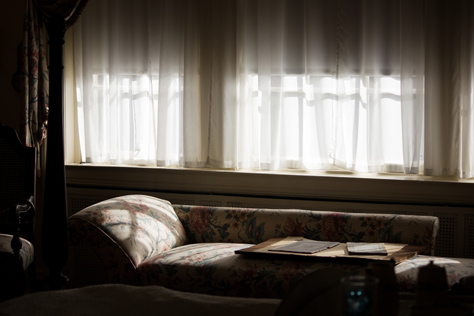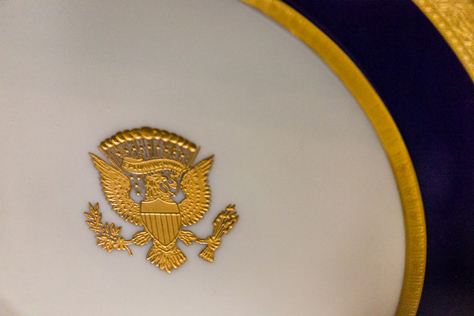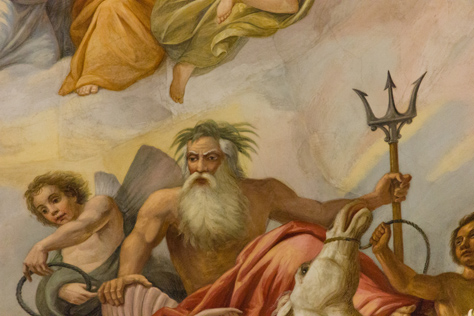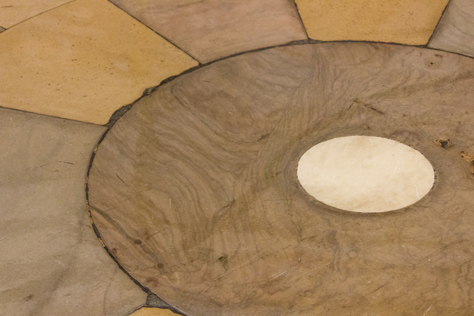
A chaise longue next to the windows in Thomas Woodrow Wilson's second floor bedroom, the location of his death on Sunday, 03 February 1924, in the Woodrow Wilson House (1915).
2340 S Street NW, Washington, District of Columbia: 31 January 2014
part of the Woodrow Wilson House album
As I was recently listening to a friend's opinions on the Ferguson, Missouri situation, there was one thing I kept thinking again and again: post hoc ergo propter hoc. Not only did I disagree with their assessment of the events, but much of it seemed to be hinged on that common logical fallacy.
It was a discussion among friends so we shared our opinions and then moved to the next topic. Since then however, I have had a particular scene from television intermittently running through my mind, one that does a nice job of explaining post hoc ergo propter hoc.
The scene in question comes from the second episode of The West Wing appropriately entitled "Post Hoc, Ergo Propter Hoc" (S01E02). You can currently watch the scene on YouTube and I have also transcribed it below.
Chief of Staff Leo McGarry: What else? Press Secretary C. J. Cregg: The Ryder Cup team is declining our invitation to come to the White House. McGarry: You're kidding. Cregg: Because of the joke. President Josiah Bartlet: You're kidding. Cregg: I'm not. Bartlet: The Ryder Cup team? Cregg: It's a group of the best golfers in the country. Bartlet: I know what the Ryder Cup team is. Thanks, Mrs. Landingham. Cregg: Sir, this may be a good time to talk about your sense of humor. Bartlet: I've got an intelligence briefing, a security briefing and a ninety-minute budget meeting all scheduled for the same forty-five minutes. You sure this is a good time to talk about my sense of humor? Cregg: No. Bartlet: Me neither. McGarry: What else? Cregg: It's just that it's not the first time it's happened. Bartlet: I know. Communications Director Toby Ziegler: She's talking about Texas, sir. Bartlet: I know! Cregg: USA Today asks you why you don't spend more time campaigning in Texas and you say it's cause you don't look good in funny hats. Deputy Communications Director Sam Seaborn: It was "big hats". Cregg: What difference does it make? Bartlet: It makes a difference. Cregg: The point is we got whomped in Texas. Deputy Chief of Staff Josh Lyman: We got whomped in Texas twice. Cregg: We got whomped in the primary and we got whomped in November. Bartlet: I think I was there. Cregg: And it was avoidable, sir. Bartlet: C. J., on your tombstone it's gonna read "post hoc ergo propter hoc". Cregg: Ok, but none of my visitors are going to be able to understand my tombstone. Bartlet: Twenty-seven lawyers in the room, anybody know "post hoc ergo propter hoc"… Josh? Lyman: Uh, uh… Post, after. After hoc. Ergo, therefore. After hoc, therefore. Something else, hoc. Bartlet: Thank you. Next? Lyman: If I had gotten more credit on the four-forty-three thing… Bartlet: Leo? McGarry: After it, therefore because of it. Bartlet: After it, therefore because of it. It means one thing follows the other, therefore it was caused by the other. But it's not always true; in fact it's hardly ever true. We did not lose Texas because of the hat joke. Do you know when we lost Texas? Cregg: When you learned to speak Latin? Bartlet: Go figure.
"Post Hoc, Ergo Propter Hoc" was written by Aaron Sorkin, directed by Thomas Schlamme and first aired on Saturday, 29 September 2001.









